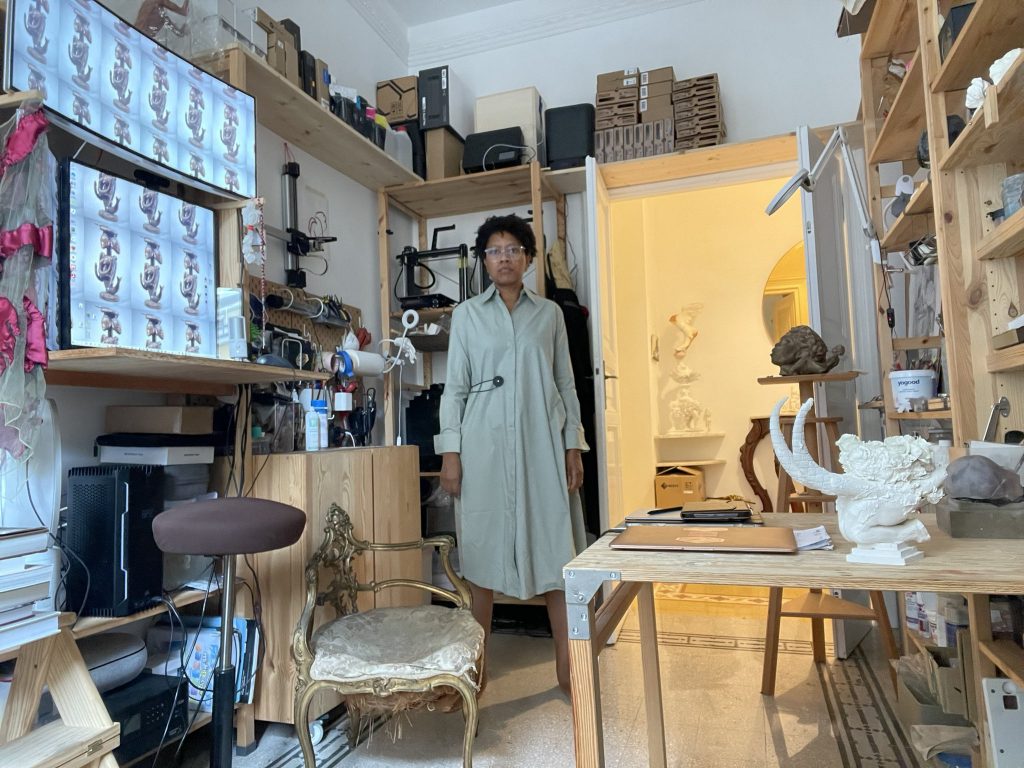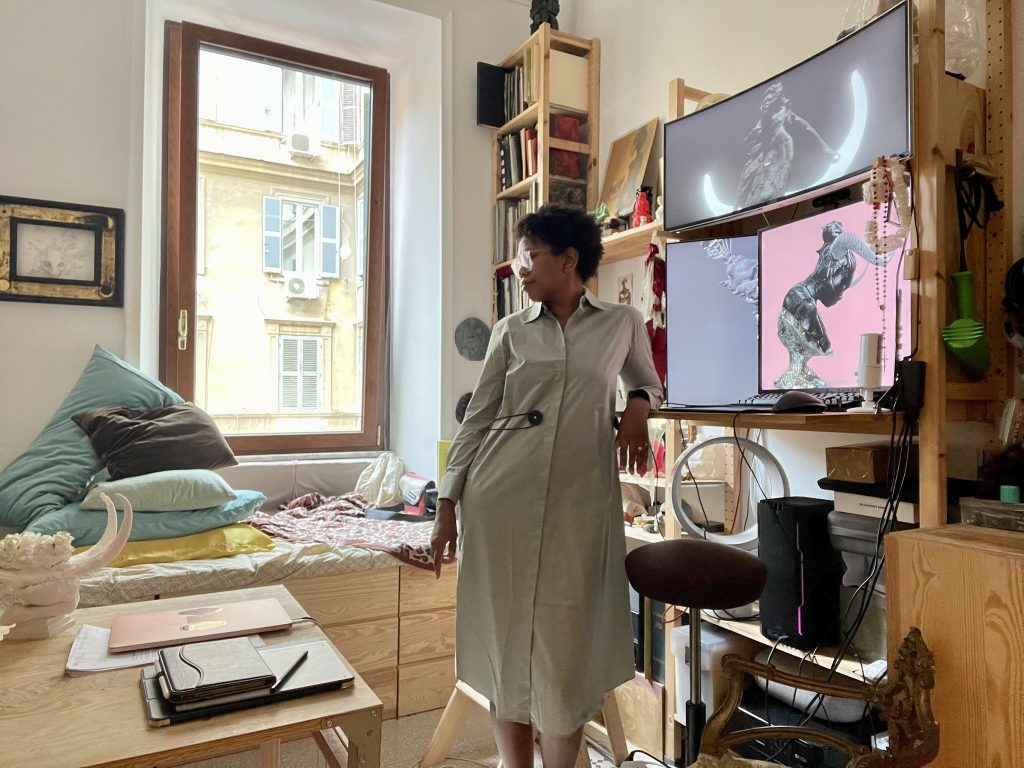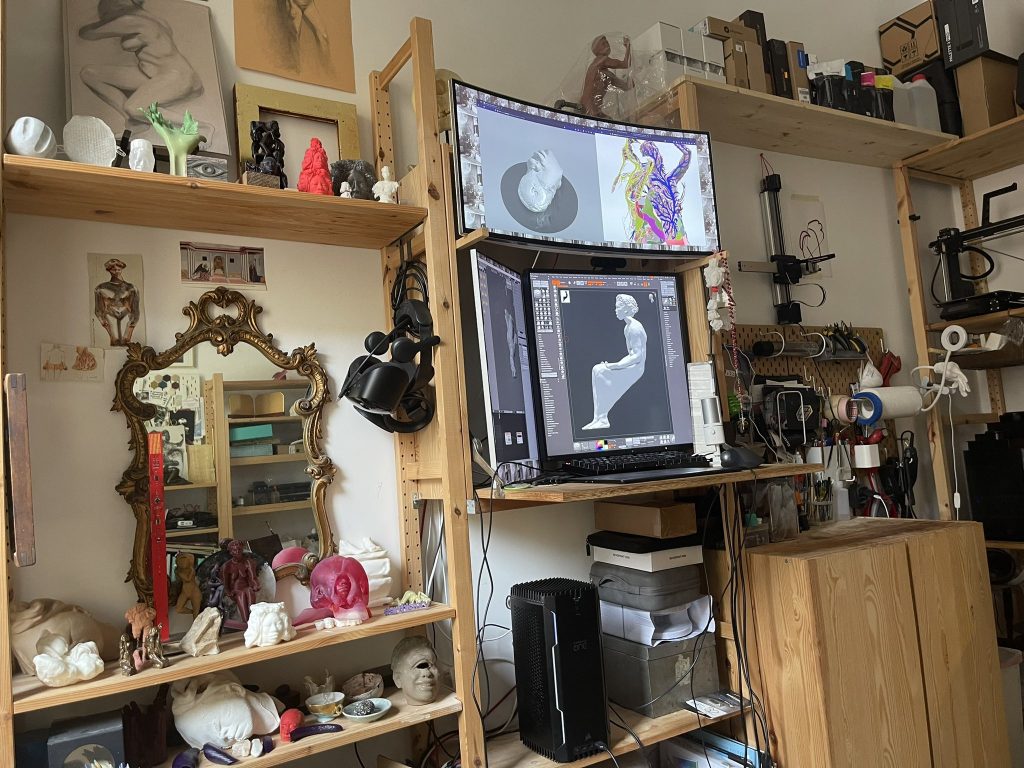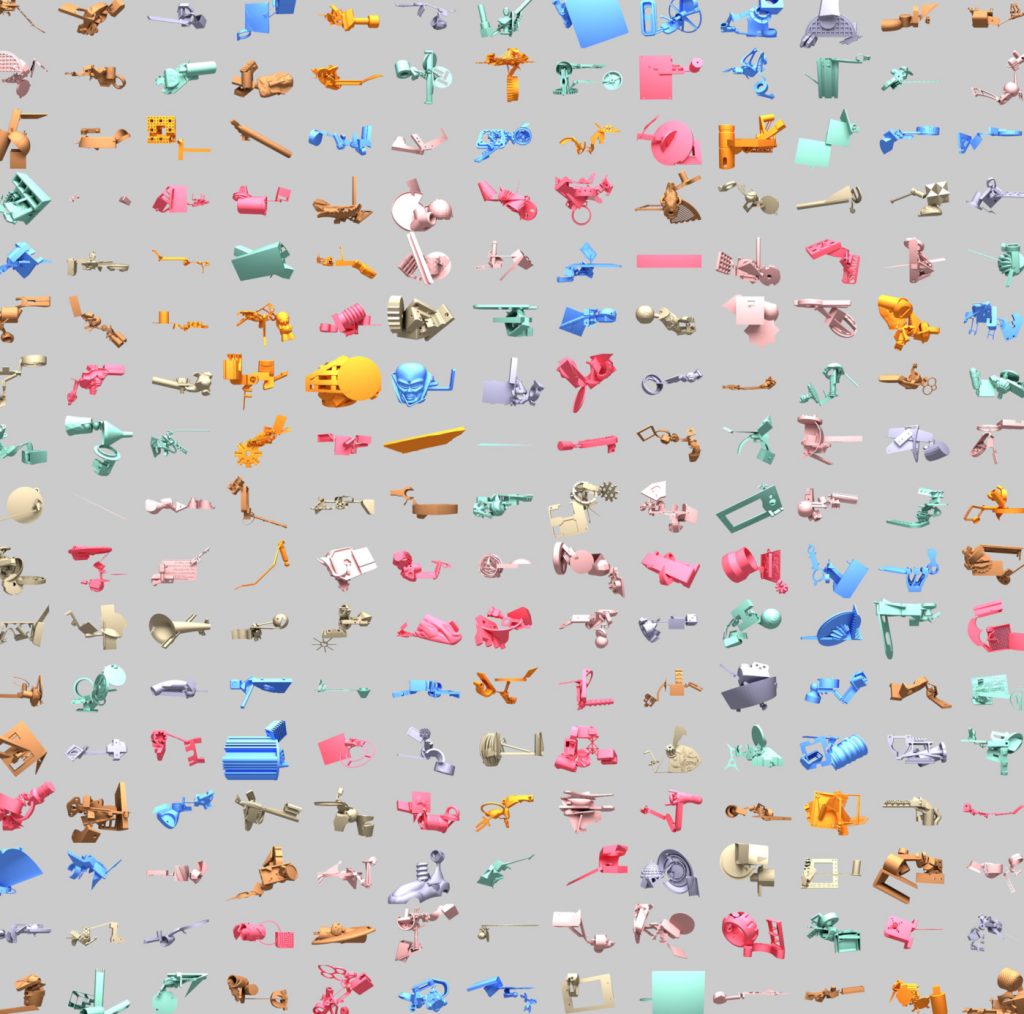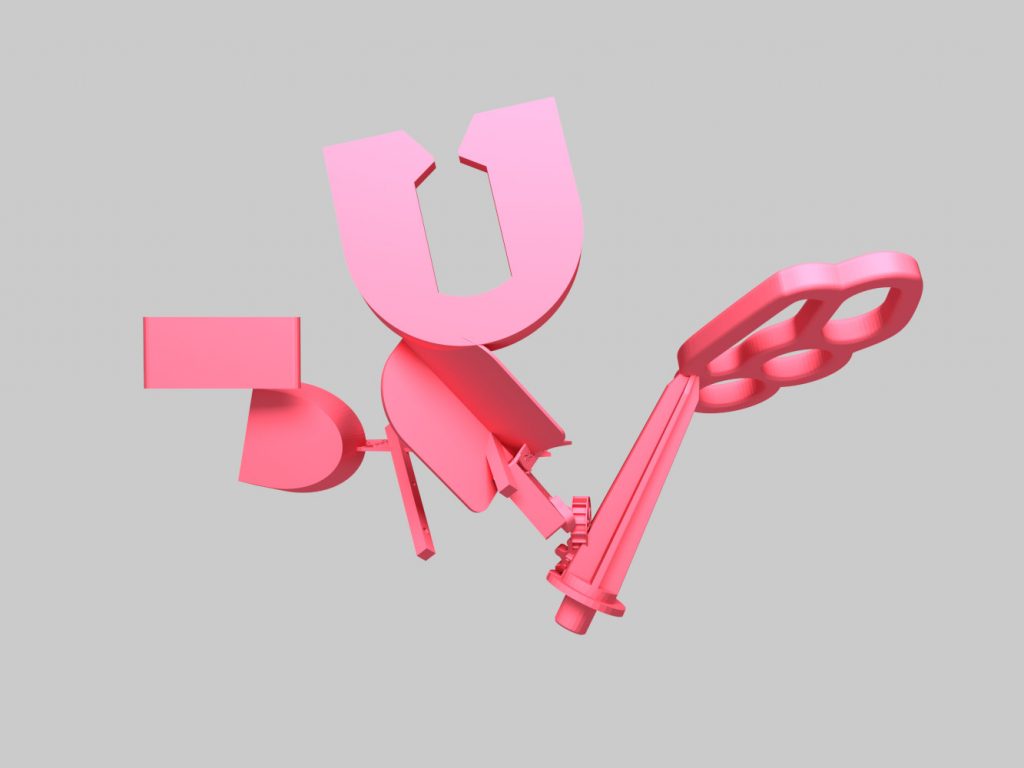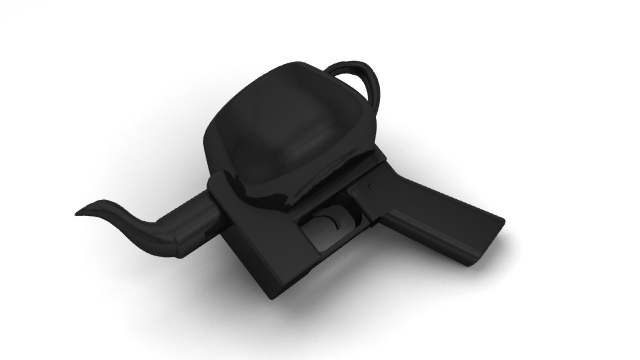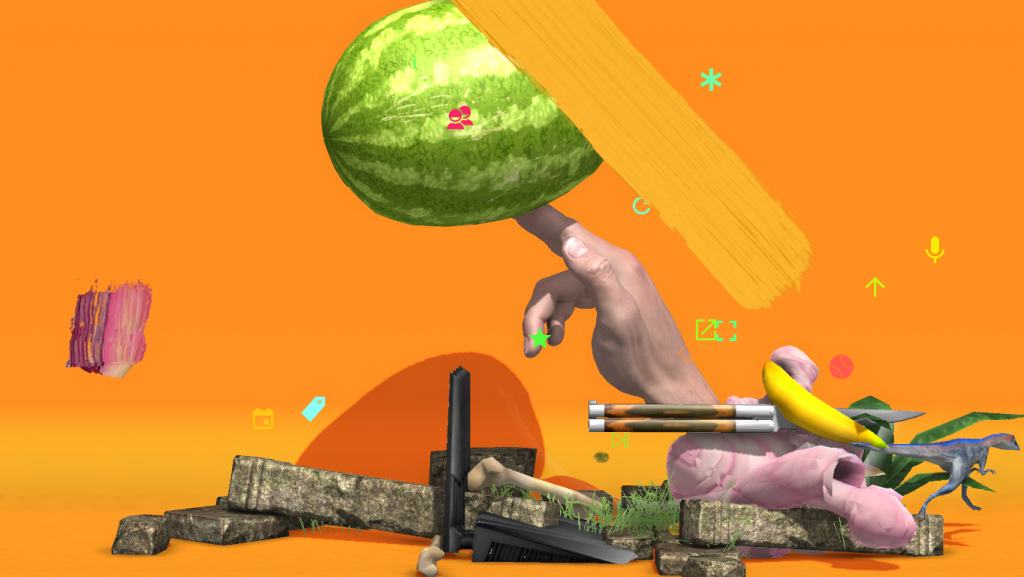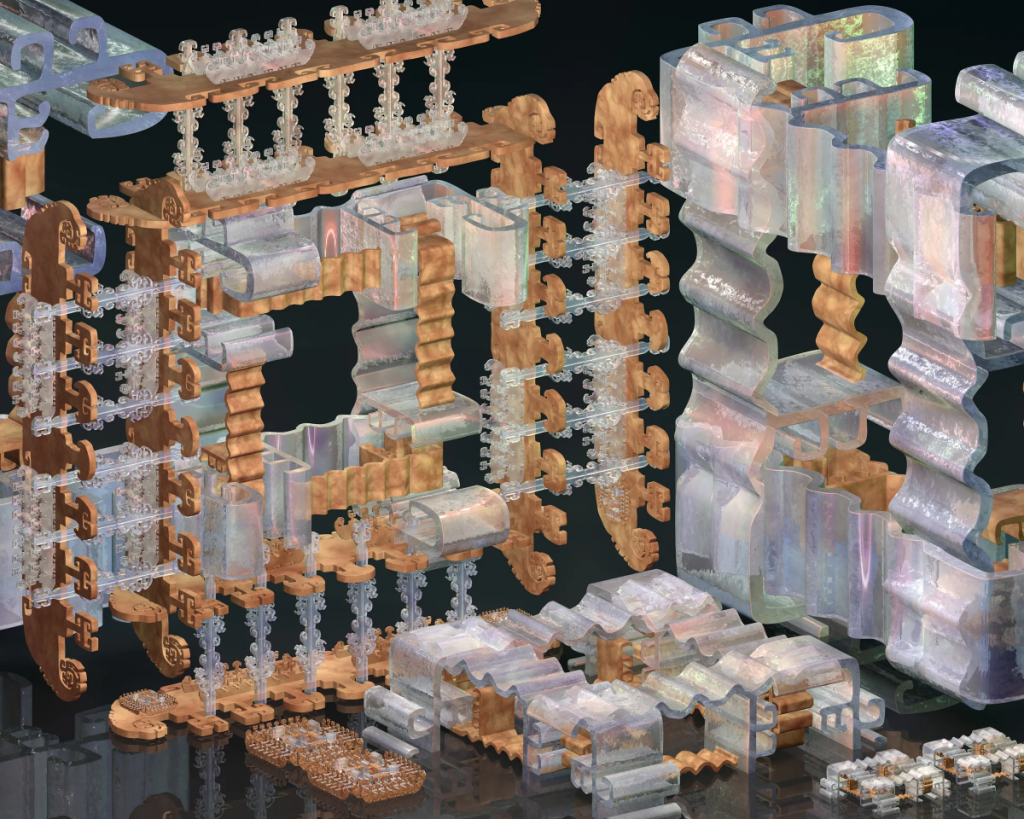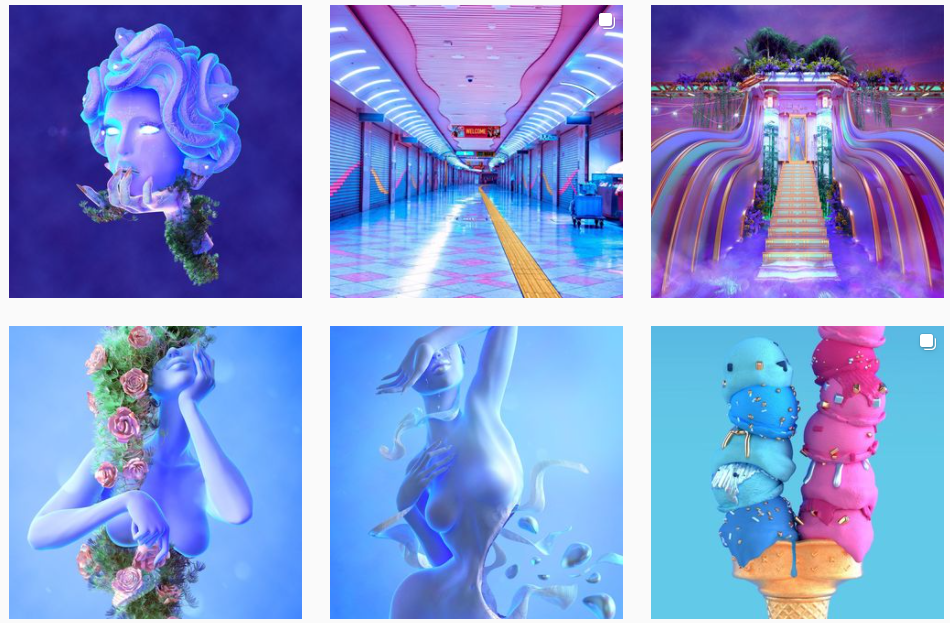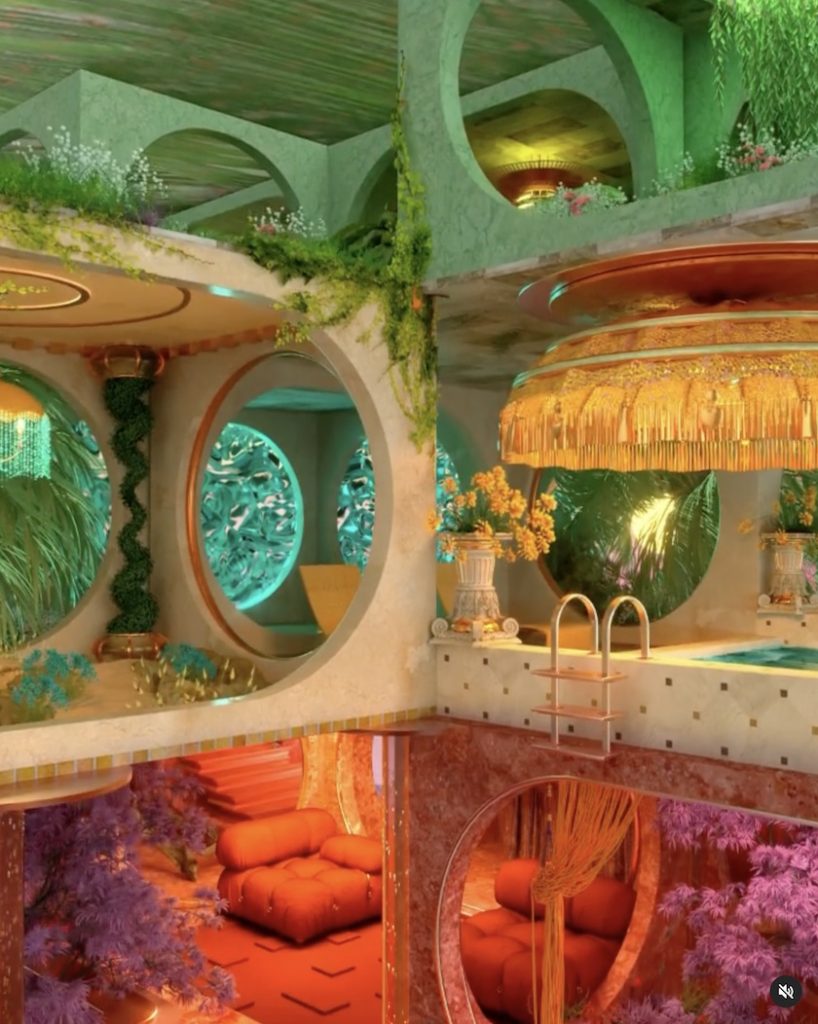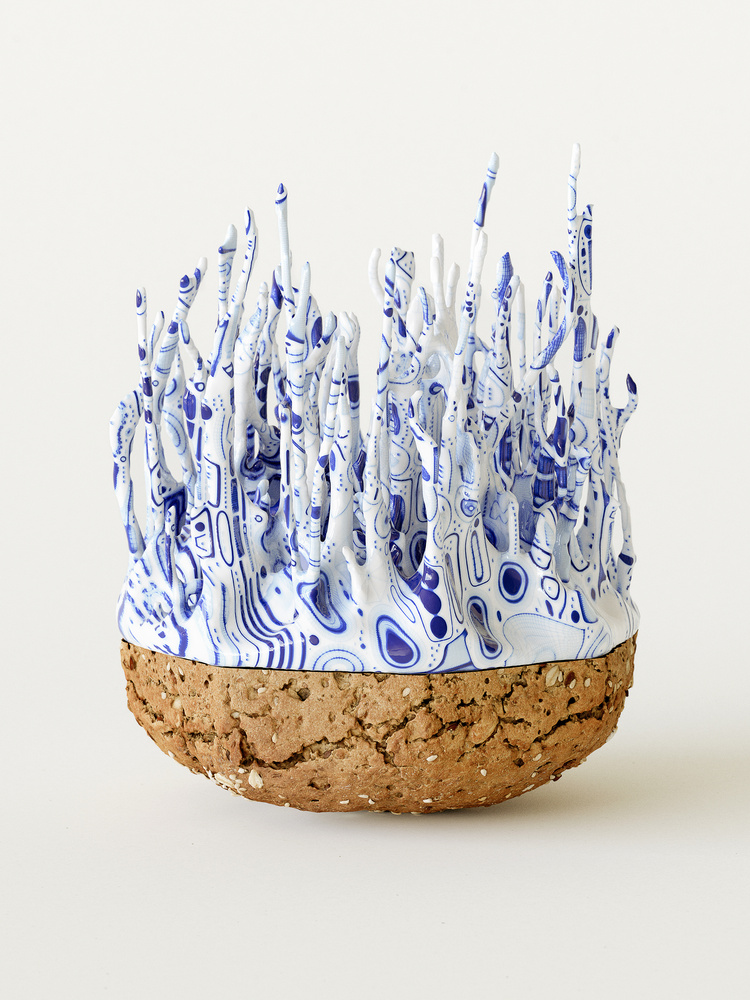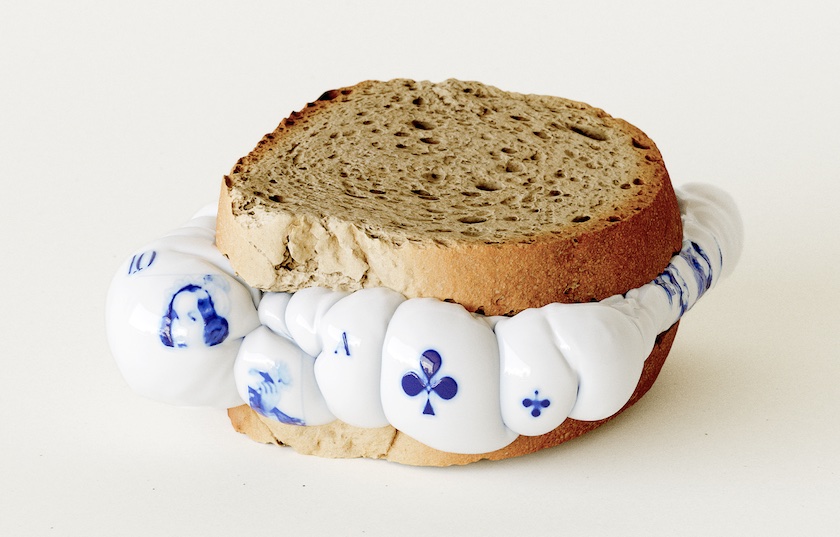Part I: All-Digital Sculpture
(Notes cribbed from Prof. Paolo Pedercini)
There are many CGI artists with a distinctly sculptural sense. Some use software workflows and 3D modeling tools to produce physical objects (with 3D printers, etc.), but many do not, and instead create virtual sculpture which is entirely produced and ‘consumed’ on the computer. Here are some examples:
Spotlight: Auriea Harvey
American artist Auriea Harvey is an indie game artist and digital sculptor. Some photos of Auriea in her studio are below. On November 10th, her online solo exhibition Gray Matter opens at Feral File, featuring eleven interactive sculptures originating from scans of new physical works: assemblages composed of previously discarded fragments and 3D prints. (Photo: The Mystery v4-dv1 (2021), augmented reality sculpure). [Interview: “Auriea Harvey and the Future of Digital Sculpture”)
Dark Matter (2014-2015) by Morehshin Allahyari is a series of hybrid sculptural objects which form humorous juxtapositions. The objects are made from objects and things that are banned or considered unwelcome the Iranian government — objects that in many other countries people use or own freely, but under Iranian government laws are forbidden or discouraged. An example (dog+dildo+satellite dish) is shown below. Also see her works, She Who Sees the Unknown and Material Speculations: ISIS
Shiv Integer (2016) by Matthew Plummer-Fernandez is “a software bot which makes assemblage-art for 3D printers. Rummaging through Thingiverse (a large online 3D-Print community with a vast archive of user-made models), the bot picks objects at random to conjoin into sculptures and gives them apt word-salad names such as ‘disc on top of an e-juice golf.’ The process follows a lineage of Dadaist readymade and chance art, but also explores the authorship-inheritance of Creative Commons licensing.”
On May 6, 2013, to great controversy, a small pro-weapons organization called Defense Distributed shared a model for a 3D-printable plastic gun called “The Liberator”, available for anyone to download and potentially harm themselves with. The US government attempted to have the file censored, after which it was widely distributed on torrents, etc. In his project Liberator Variations (2013), Kyle McDonald spoofed the Liberator by hybridizing it with other objects, noting: “When something is impossible to regulate, it makes more sense to focus on education and discussion than censorship.”
How To Everything by Theo Triantafyllidis (2016) is “a generative live simulation. Using a game engine and a gaming PC, a simulated environment performs continuously testing its limits. A series of actors / objects, each with individual characters, behaviors, needs and desires are set to freely interact in a space that is contained within a screen. A complex and unpredictable system, that constantly defies associations and meaning, emerges.”
Lattice-Face Parameter Chant by Brenna Murphy
facingface~terrestrialtrancetree by Brenna Murphy (2011). An example of the expansive, layered, complex, multidimensional worlds crafted by Brenna Murphy. Using 3D modeling tools the artist presents us with an ultra-high resolution image of what appears to be at once a sculpture, and a geography. “I add and carve until the arrangement is balanced in a way that creates a perfectly cohesive, vibrating ecosystem,” she says of her process.
Kathryn Blake, see: https://www.instagram.com/p/CIyNu7dJSjf/
Bread Prosthetics (2020) by zeitguised studio. A series of digital sculptures “fusing extreme limits of value and fragility: Post-Cyberpunk Virtual Delftware NFTs”.
Dauphin 007 by Jonathan Monaghan (2011)
Zium Society – a collective of various artists presents a downloadable, all-digital art gallery of virtual sculptures. (Skip to 3:50 in first video)
Museum of Other Realities: another collective of various artists, with an online gallery (Jump to 8:18)
A museum of dubious splendors by Studio Oleomingus (2018), is “a storybook from the world of Somewhere. It is an adaptation of a series of essays written by Mir UmarHassan, a Gujarati poet whose works have proven notoriously difficult to translate because of the mellifluous use of Urdu and Hindi in his compositions.”

